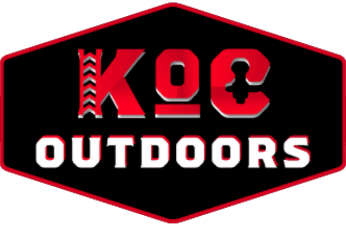Which Hay Trailer Should You Buy? Round Bale vs. Flatbed Options Explained
Choosing the right hay trailer isn't just about getting from point A to point B – it's about making your farming operation run smoother, safer, and more profitable. With numerous options available, the decision between round bale trailers and flatbed trailers can be a daunting task. But it doesn't have to be.
Every farmer faces this choice at some point, and honestly, there's no one-size-fits-all answer. What works great for your neighbor might not be the best fit for your operation. That's why understanding the real differences between these trailer types matters so much.
What Makes Round Bale Trailers Special
Round bale trailers are built with one job in mind – moving those big, round hay bales without the headache. These trailers come with curved metal cradles or frames that cradle each bale like a baby in a crib. No rolling around, no shifting during transport, no worrying about whether that expensive hay will still be in good shape when it reaches its destination.
Most of these trailers can carry between 8 and 20 bales at once, which means fewer trips back and forth across the field. Loading is pretty straightforward, too – just use a tractor with a bale spear, and those bales roll right into place. It's almost foolproof, which is saying something when dealing with heavy, awkward loads.
The downside? These trailers are basically one-trick ponies. Sure, they're excellent at what they do, but need to move other farm stuff like fence posts or equipment? That's where things get tricky. For some farmers, that specialization feels limiting, especially when equipment budgets are tight and every piece needs to pull double duty.
Why Flatbed Trailers Keep Things Flexible
Flatbed trailers are the Swiss Army knives of the farming world. Need to haul round bales? No problem. Square bales? Easy. Tractor parts, lumber, feed, or that old truck engine that's been sitting in the barn? All doable on a good flatbed.
This versatility comes in handy more often than most people realize. One day it's hay season, the next week there's fencing to repair, and before long, someone needs building supplies moved—a flatbed handles all of it without missing a beat.
When it comes to hay specifically, flatbeds work well with both round and square bales. Square bales stack like building blocks – neat, tidy, and secure. Round bales take a bit more work since there's nothing to keep them from rolling, but with the right straps and tie-downs, they stay put just fine.
The challenge with flatbeds is that securing round bales properly takes time and attention. It's not difficult, but it's an extra step that adds to each loading process. Some people find this tedious, especially during busy hay season when every minute counts.
The Money Side of Things
Let's talk dollars and cents, because that usually matters as much as anything else. Basic flatbed trailers typically cost less upfront than specialized round bale trailers, but the gap isn't always huge. High-end flatbeds can cost just as much as mid-range round bale trailers, so the price advantage isn't guaranteed.
The real financial consideration goes beyond the sticker price. Think about time costs – how much is an hour of labor worth? If a round bale trailer saves 20 minutes per load and there are 50 loads per season, that adds up to real money. On the flip side, if that flatbed gets used for non-hay jobs throughout the year, its value proposition changes completely.
Don't forget about the extras either. Flatbed trailers need good tie-down equipment – quality straps, chains, and maybe some bale stops. Round bale trailers might need occasional cradle repairs or replacements. These ongoing costs matter too.
How to Make the Right Choice
The truth is, both types of trailers work well when matched to the right situation. Round bale trailers excel when hay transport is the primary job and efficiency matters most. They're particularly valuable for operations moving large volumes of round bales regularly.
Flatbed trailers shine when versatility trumps specialization. They make sense for smaller operations where equipment needs to serve multiple purposes, or for farmers who regularly haul different types of cargo.
Think about the bigger picture of farming operations. How many round bales get moved each year? What other hauling needs come up regularly? How comfortable is everyone with load securement? These practical questions matter more than theoretical advantages.
Finding What Works Best
Look, at the end of the day, both of these trailers will get the job done. It really comes down to what makes sense for how things work on your farm. Some folks absolutely love their round bale trailers – they'll tell you it's the best investment they ever made. Others will defend their flatbed trailers until the cows come home, talking about all the different ways they've used them over the years.
Here's the thing – don't rush this decision. Take some time to really think about what kinds of loads get moved around your place most often. Chat with neighbors about what they're using and whether they'd buy the same thing again. If possible, take a look at both types when they're actually working. Maybe even offer to help load hay just to get a feel for how each one handles.
This trailer's going to be part of your operation for a long time, probably way longer than you think. Getting the right one now will save headaches down the road, and that peace of mind is worth waiting for.
